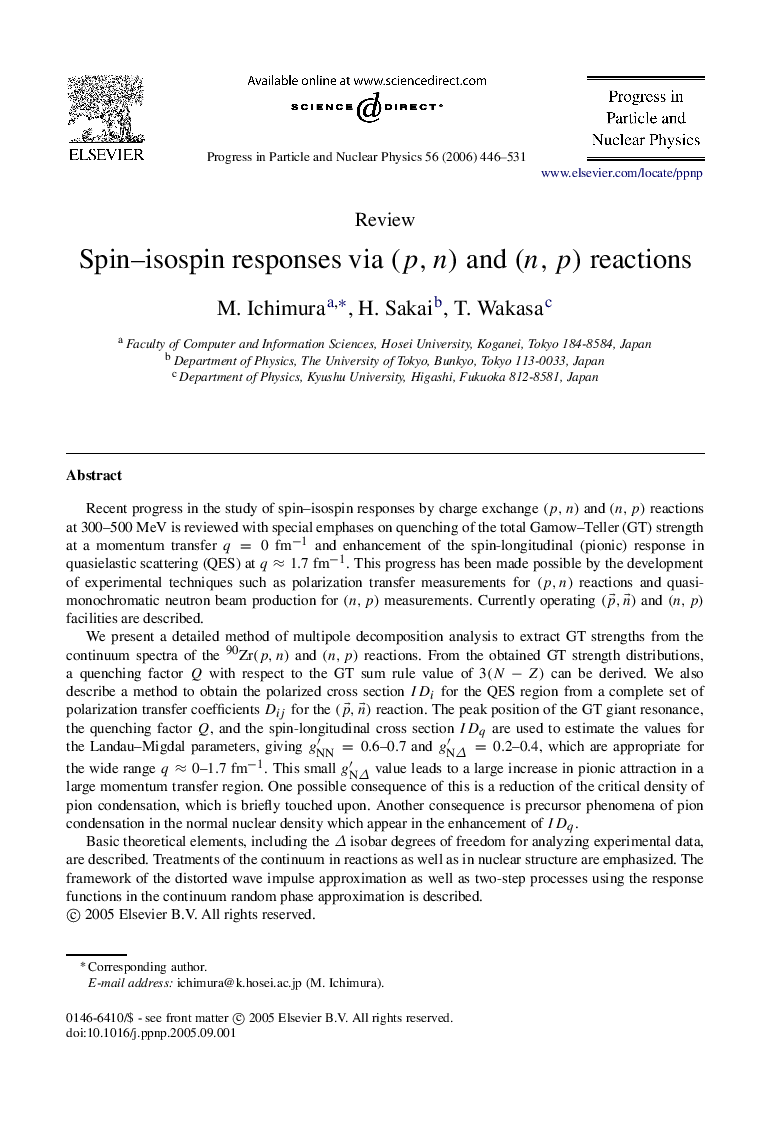| Article ID | Journal | Published Year | Pages | File Type |
|---|---|---|---|---|
| 1854756 | Progress in Particle and Nuclear Physics | 2006 | 86 Pages |
Recent progress in the study of spin–isospin responses by charge exchange (p,n)(p,n) and (n,p)(n,p) reactions at 300–500 MeV is reviewed with special emphases on quenching of the total Gamow–Teller (GT) strength at a momentum transfer q=0fm−1 and enhancement of the spin-longitudinal (pionic) response in quasielastic scattering (QES) at q≈1.7fm−1. This progress has been made possible by the development of experimental techniques such as polarization transfer measurements for (p,n)(p,n) reactions and quasi-monochromatic neutron beam production for (n,p)(n,p) measurements. Currently operating (p→,n→) and (n,p)(n,p) facilities are described.We present a detailed method of multipole decomposition analysis to extract GT strengths from the continuum spectra of the Zr90(p,n) and (n,p)(n,p) reactions. From the obtained GT strength distributions, a quenching factor QQ with respect to the GT sum rule value of 3(N−Z)3(N−Z) can be derived. We also describe a method to obtain the polarized cross section IDiIDi for the QES region from a complete set of polarization transfer coefficients DijDij for the (p→,n→) reaction. The peak position of the GT giant resonance, the quenching factor QQ, and the spin-longitudinal cross section IDqIDq are used to estimate the values for the Landau–Migdal parameters, giving gNN′=0.6–0.7 and gNΔ′=0.2–0.4, which are appropriate for the wide range q≈0–1.7fm−1. This small gNΔ′ value leads to a large increase in pionic attraction in a large momentum transfer region. One possible consequence of this is a reduction of the critical density of pion condensation, which is briefly touched upon. Another consequence is precursor phenomena of pion condensation in the normal nuclear density which appear in the enhancement of IDqIDq.Basic theoretical elements, including the ΔΔ isobar degrees of freedom for analyzing experimental data, are described. Treatments of the continuum in reactions as well as in nuclear structure are emphasized. The framework of the distorted wave impulse approximation as well as two-step processes using the response functions in the continuum random phase approximation is described.
